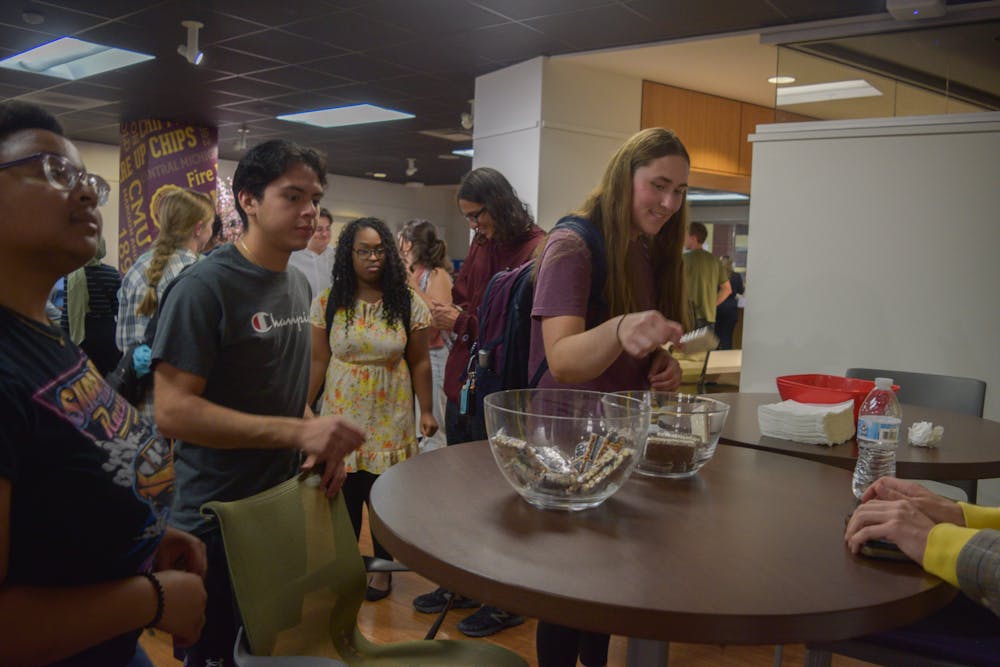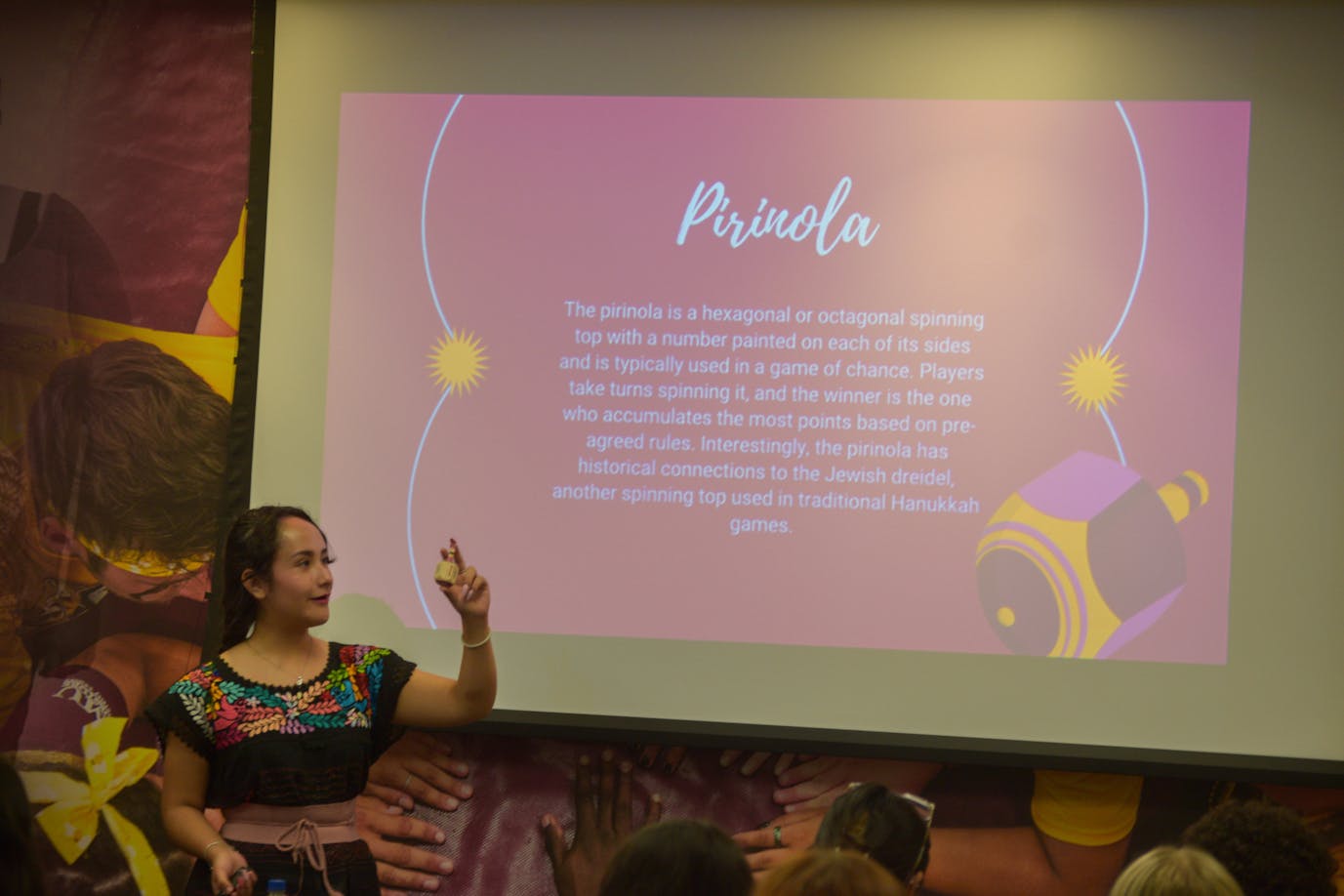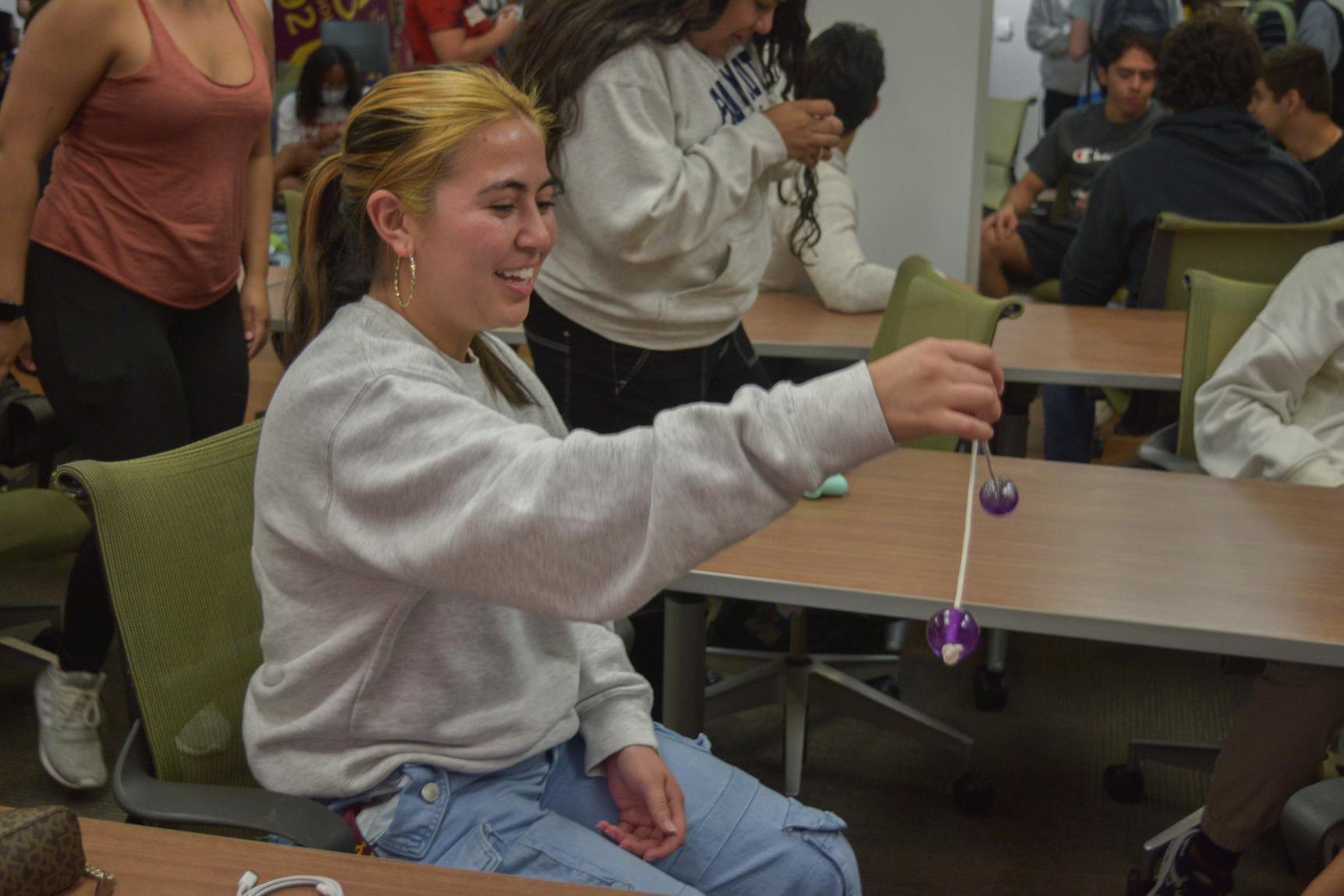Juguetes y Dulces: A journey into Mexican traditions

Juguetes y Dulces means toys and sweets in Spanish. Central Michigan University students filled up the Bovee University Center 108 to attend the Juguetes y Dulces event on Sept. 18 as part of Hispanic Heritage Month.
The event featured Frida Ferrusquia, who showcased the toys, games and sweets of her childhood and culture while teaching about Mexican culture and traditions.
Ferrusquia was born in the United States, but spent most of her life in Mexico City, where her family still lives.

Central Michigan University junior Frida Ferrusquia explains the game Pirinola during the Juguetes y Dulces event, Monday, Sept. 18 in the Center for Student Inclusion and Diversity in the Bovee University Center. Pirinola is a spinning top used in a game of chance.
She moved to Mexico City when she was young. Then, at 15, she moved back to the U.S. by herself. Here she embraces the chance to tell people both about her culture and her family.
“I have talked for my Spanish club, and in all my clubs, ... but usually it is like 10 people,” Ferrusquia said. “But I was impressed by how many people are here.”
Ferrusquia demonstrated and handed around several toys and board games, some familiar to the yo-yo -- and others that many had not heard of -- like the matraca, a loud, spinning noisemaker -- for people to try themselves.
She said her mother told her to bring the matraca, because while it wasn’t necessarily a toy, chasing around her friends with it was part of her mother’s childhood.
Ferrusquia also brought in a Lele doll, which she described as a “Mexican Barbie." Lele dolls are small ragdolls that, much like Barbie, represent beauty and imagination in Mexican culture. What makes these dolls special is that they are unique and come in various styles and designs, Ferrusquia said.
Another toy that was demonstrated was the balero, a cup attached to a stick by a string. The objective is to throw the cup and catch it on the stick. The toy caught the attention of many; and while Ferrusquia herself couldn’t do it, many people tried, with some successes, to catch it.

After the presentation, attendees tried the various Mexican sweets, played with the toys and played group games.
Ferrusquia talked about palanquetas and alegrías de amaranto -- both candies made of nuts or seeds that are held together with caramel and sugar,-- as well as cocadas, a coconut candy. She then handed out these treats, offering a taste of the culture.

“All summer I wanted something unique," Ferrusquia said. "When you think about Mexico, you think about food and dances and Spanish and things like that.
"I wanted to do something unique, something that everyone has, but Mexico makes it special."
Ferrusquia chose to focus on the parts of her culture that she took the most pride in.
“I wanted to do something fun, because there’s these huge and important topics like immigration. ... I wanted to do something fun and more interactive, because I think that is a huge part of Mexican culture," Ferrusquia said. “Fun, colorful, vibrant colors - that’s something I like about my culture."
The event ended with several rounds of “Lotería,” a Mexican game or chance that is similar to Bingo, where competitive attendees could accuse their friends of cheating just like any other game.

Hispanic Heritage Month events are continuing to taking place till Oct. 16. To learn more about them, visit Engage Central.



